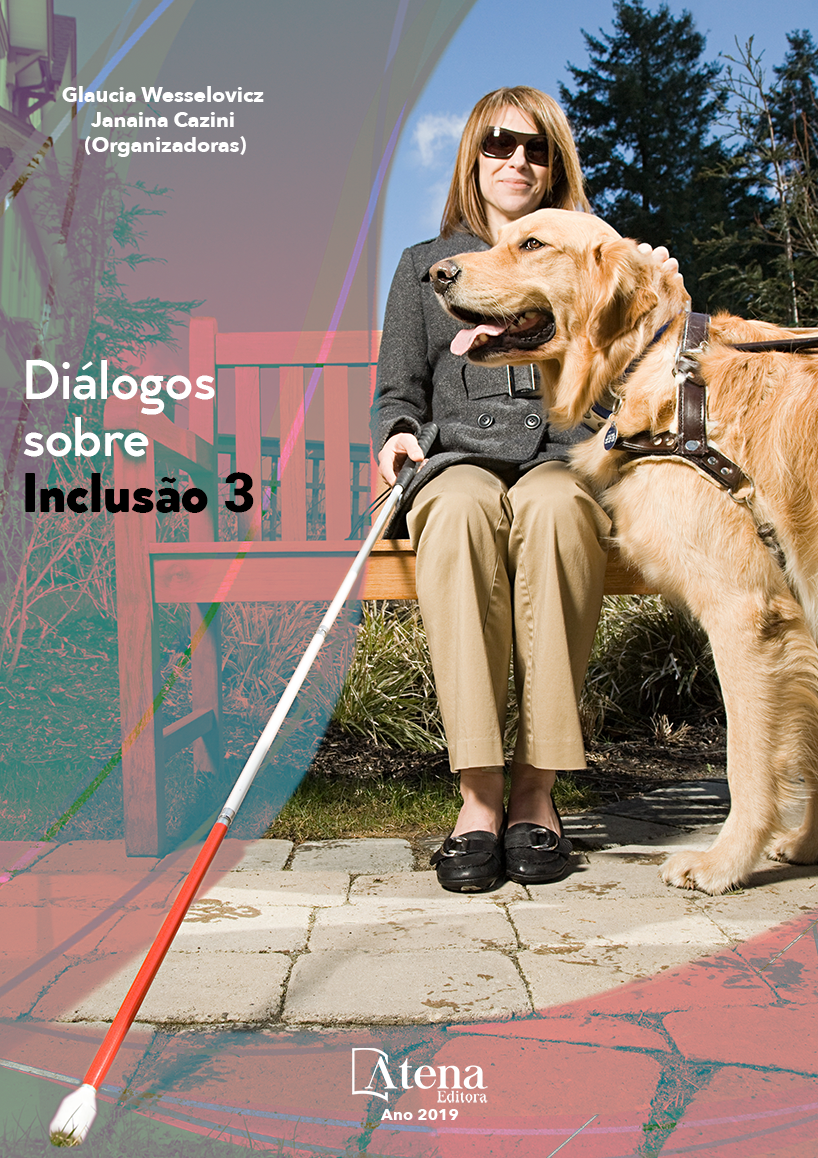
SABERES E PRÁTICAS EM ORIENTAÇÃO E MOBILIDADE: UMA PROPOSTA DE FORMAÇÃO CONTINUADA
A visão é responsável por estabelecer
a relação da pessoa com o meio, sua perda,
sendo total ou parcial, causa prejuízos do tipo
social, psicológico, educacional, motor, bem
como afeta outras áreas do desenvolvimento.
No que se refere à limitação motora, há
diminuição na movimentação espontânea e,
para vencer essa dificuldade, faz-se necessário
o ensinamento das técnicas de Orientação e
Mobilidade por um profissional com formação.
O presente artigo tem o objetivo de socializar
vivências de docentes na realização e
participação de cursos de formação em
Orientação e Mobilidade. Diante da realidade
observada nas instituições em que foram
implementados os cursos, identificaram-se
resultados satisfatórios após a realização das
referidas formações, por exemplo: (a) benefício
às instituições que atuam na educação de
pessoas com deficiência visual por terem
ampliado a capacidade de atendimento dos
alunos com deficiência visual em Orientação
e Mobilidade; (b) melhoria na qualidade dos
serviços, considerando o bom aproveitamento
dos cursistas por meio da apreensão e troca de
saberes referentes à docência em Orientação e
Mobilidade; (c) aumento do número de docentes
nas instituições que ensinam as técnicas
de Orientação e Mobilidade. No contexto
apresentado, sugere-se uma formação com
carga horária total em torno de 200 horas, com
uma base teórica que fundamente o contexto
atual
SABERES E PRÁTICAS EM ORIENTAÇÃO E MOBILIDADE: UMA PROPOSTA DE FORMAÇÃO CONTINUADA
-
DOI: 10.22533/at.ed.64419280520
-
Palavras-chave: Deficiência visual, Orientação e mobilidade, Formação de professores.
-
Keywords: Visual deficiency, Orientation and mobility, Teacher training
-
Abstract:
The eye sight establishes the
person’s relationship with the environment, its
loss, being partial or total, can cause social,
psychological, educational and motor skills
impairment, as well as other areas of the
individual development. There is a decrease in
spontaneous movement regarding the personal
motor aspect, which can be overcome through
the Guidance and Mobility techniques taught
by a trained professional. This article aims to
socialize the experiences of such professionals
throughout implementing and also taking part in
Orientation and Mobility training courses. It was
possible to identify satisfactory results at the
completion of the training sessions held at the
institutions, such as: (a) institutions benefit due to the expanded attendance capacity
regarding the education of visually impaired people through Orientation and Mobility
training; (b) provided services upgrade, considering the trainees harness through the
apprehension and exchange of knowledge regarding the Orientation and Mobility
subject; (c) increased number of Orientation and Mobility trained professionals in the
institutions. Regarding the presented context, a workload of approximately 200 hours
is suggested, with the theoretical basis that can support the current scenario and its
necessities.
-
Número de páginas: 15
- Izabeli Sales Matos
- Artur José Braga de Mendonça


